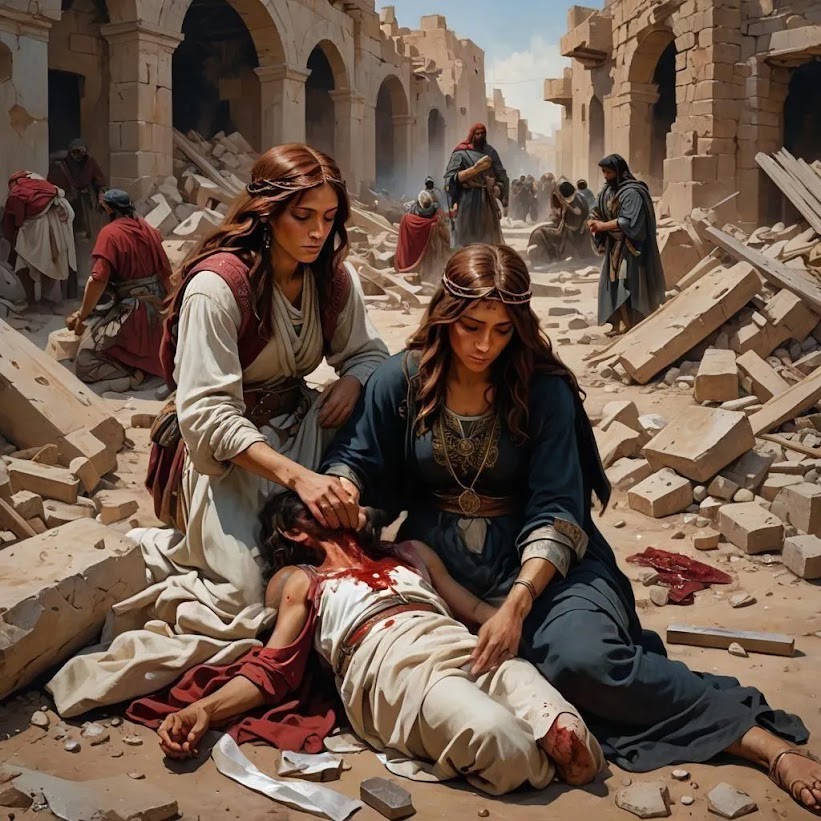"Mercy Amidst Chaos" is an oil painting that captures a poignant moment in the midst of a fierce battle. Inspired by Leonardo da Vinci's mastery of composition and emotional depth, this artwork juxtaposes the tenderness of the Virgin Mary and Mary Magdalene with the tragedy of war.
In the center of the composition lies an Arab Bedouin warrior woman, her dark red hair flowing, wounded and bleeding. She lies amidst the debris and ruins, symbolizing the price paid in times of conflict. Her bravery and strength are evident, even in her vulnerability. This warrior woman represents the resilience and humanity that can be found in any culture, even amidst the chaos of war.
Both the Virgin Mary and Mary Magdalene kneel alongside the wounded woman, their faces filled with compassion and concern. Their presence exudes maternal care and empathy, as they gently tend to her wounds and offer solace amidst the surrounding destruction. Their inclusion pays homage to the universality of suffering and the healing power of compassion, transcending religious and cultural boundaries.
Please visit my other blogs: Art Collector, Mythology, Marine Art, Portrait of a Lady, The Orientalist, Art of the Nude and The Canals of Venice, Middle East Artists, 365 Saints, 365 Days,
and Biblical Icons,
also visit my Boards on Pinterest and deviantart
Images are copyright of their respective owners, assignees or others.
Some Images may be subject to copyright
I don't own any of these images - credit is always given when due unless
it is unknown to me. if I post your images without your permission, please tell
me.
I do not sell art, art prints, framed posters or reproductions. Ads are
shown only to compensate the hosting expenses.
If you enjoyed this post, please share with friends and family.
Thank you for visiting my blog and also for liking its posts and pages.
Please note that the content of this post primarily consists of articles
available from Wikipedia or other free sources online.






No comments:
Post a Comment